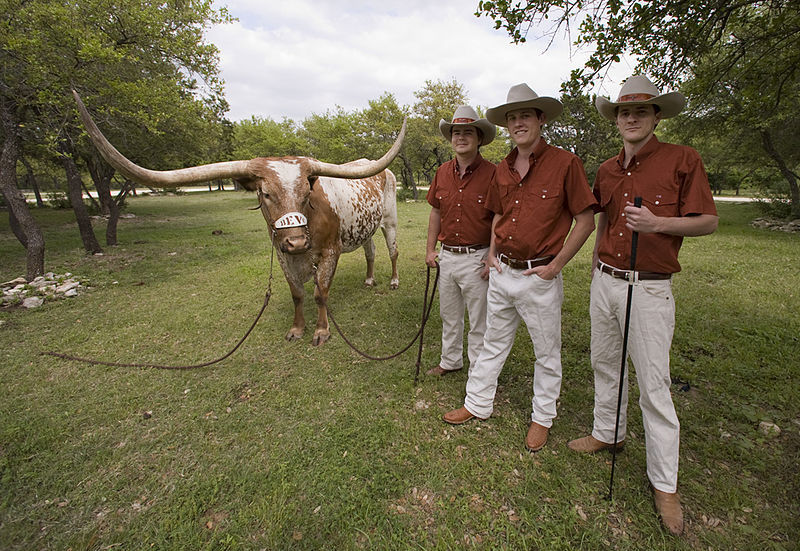Live animals a big part of college football traditions
Published 12:45 pm Thursday, October 8, 2015

- Bevo and its handlers
The University of Texas Longhorn’s mascot Bevo XIV will not make it to this weekend’s big game. It has been the mascot since 2004 and was expected to go to Dallas this weekend for the Red River Shootout against Big 12 Rival Oklahoma at the Cotton Bowl.
The longhorn steer is said to have a life-threatening condition and will miss the Red River Shootout. It’s the 14th steer to serve as Texas’ mascot. The tradition of bringing the steer to games began back in 1916.
Bevo is just one of many college football teams that have adopted live animals as mascots, each with interesting origins.
Uga: This season the Georgia Bulldogs welcomed a new Uga into the family. Russ, who had served as Uga IX since September, 2012, retired. He was replaced by Que, the 2-year old grandson of Russ.
The Uga mascot line started in 1956 when Sonny Seiler brought a bulldog that was given to him as a wedding present to Georgia’s first home game of the season. Afterwards, head coach Wally Butts asked his permission to use the dog as Georgia’s mascot. Since then Uga has been prowling the George sideline.
Ralphie: The Buffalos are the mascot for Colorado University. But Ralphie is the headliner. Surrounded by five men who are called the “Ralphie Handlers,” it runs around the field after touchdowns at CU.
The tradition began in 1934, three weeks after the selection of Buffaloes as a nickname for the University in a contest by the school newspaper. A group of students paid$25 to rent a bison calf and his keeper for the last game of the 1934 potato season. But they didn’t start naming the bison Ralphie until 1966 with Ralphie I.
War Eagle: Auburn is one of the few the few programs that has two mascots. It’s official mascot is the Tigers, yet the one that excites fans the most is the War Eagle. However Auburn fans will proclaim the “War Eagle” is Auburn’s battle cry, not a mascot or nickname.
There is some controversy on exactly how the War Eagle came to be associated with Auburn. But the most popular story goes back to 1892, the first time Auburn played Georgia in football. According to lore, a Civil War veteran and his eagle were in the stands watching the game. The eagle began flying around the field. At the exact same time, Auburn went on a game-winning drive. Excited students started chanting War Eagle in their elation. At the game’s end, the eagle took a sudden dive, crashed into the ground, and died. However, the nickname stuck.
Rameses: North Carolina’s Rameses is a Horned Dorset Sheep that appeared at the Tar heels football games with its horns painted blue.
While the Ram has nothing to do with Tar heels, the athletic department adopted it as its mascot in 1924 after a UNC football player earned the nickname the battering ram. That sparked the idea in one of the male cheerleaders to make the ram the mascot for the team.
Things were taken too far in 1996 when Rameses XXIII was killed in his pasture. An inebriated 26-year-old was charged with the crime after he stumbled into the field, slashed the ram’s throat and cut off its left front leg, stabbing it as many as 10 times along its chest and neck.
Boomer & Sooner: Technically, the Oklahoma Sooners’ mascot is the Sooner Schooner. But the two horses that pull the wagon across OU’s field after each touchdown are known as Boomer and Sooner. The Sooner Schooner and ponies were introduced in 1964 and became the official mascot in 1980. There have been five sets of ponies.



